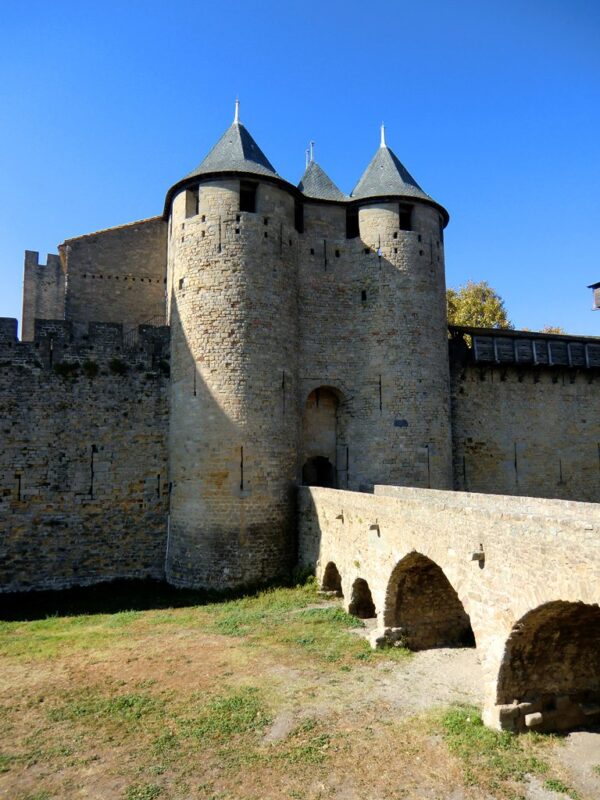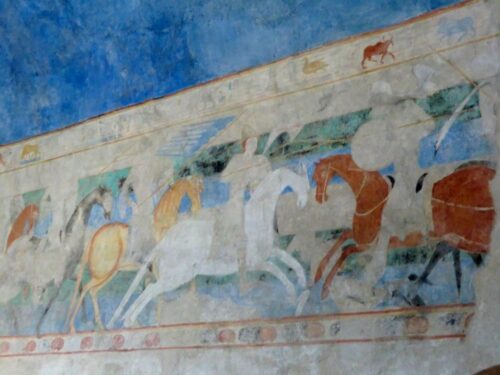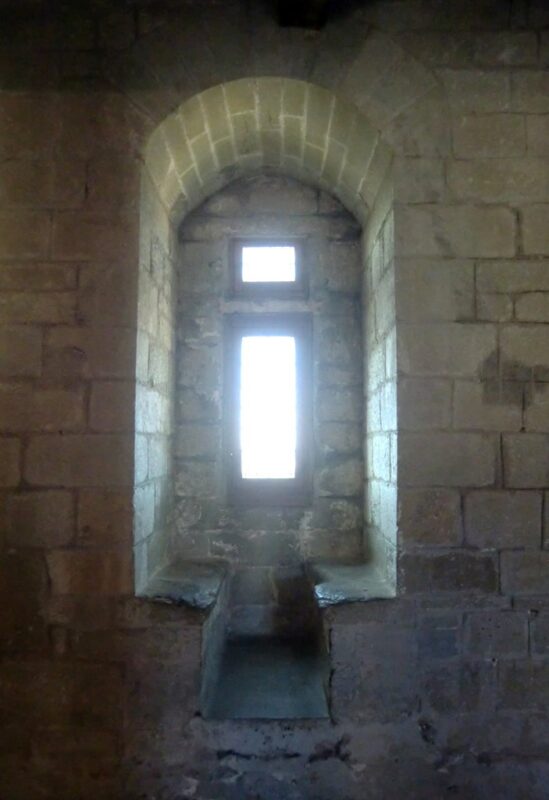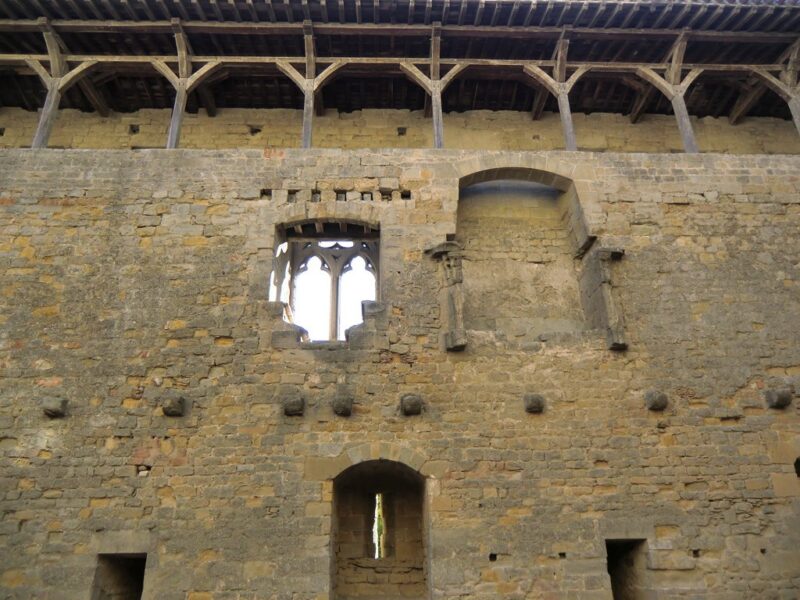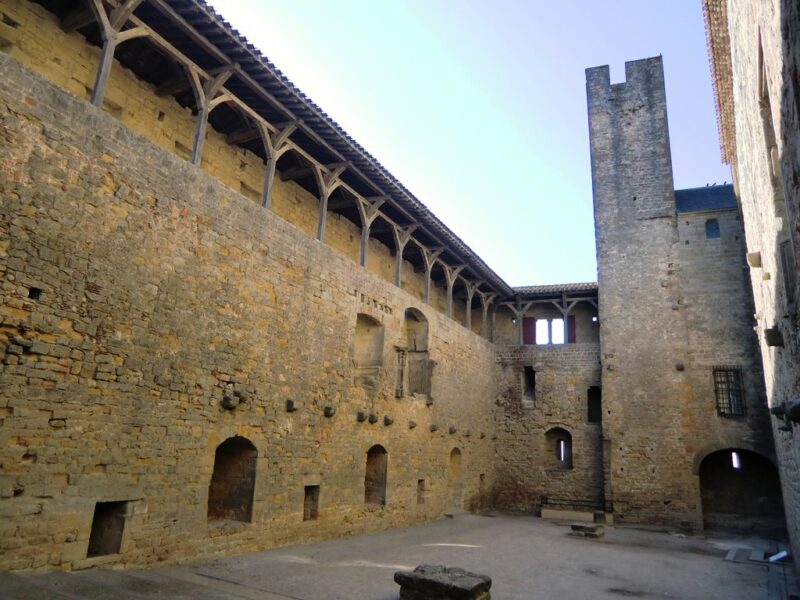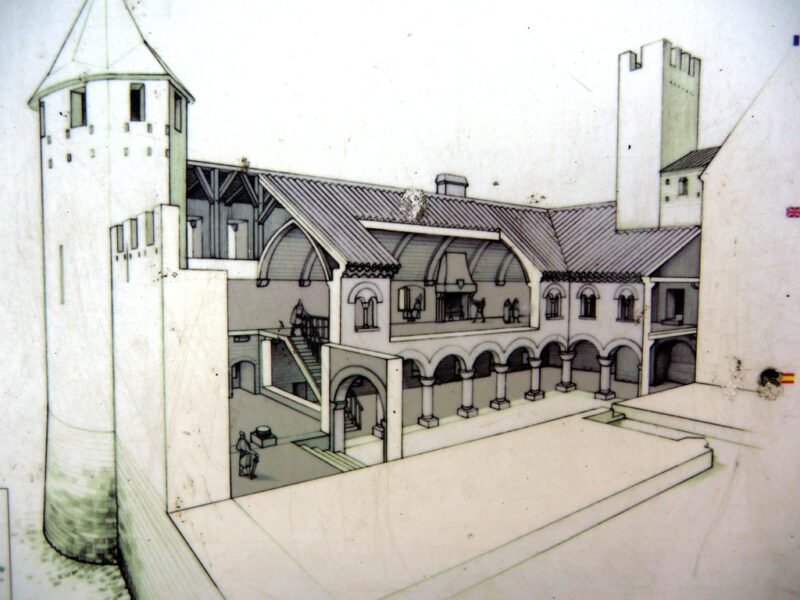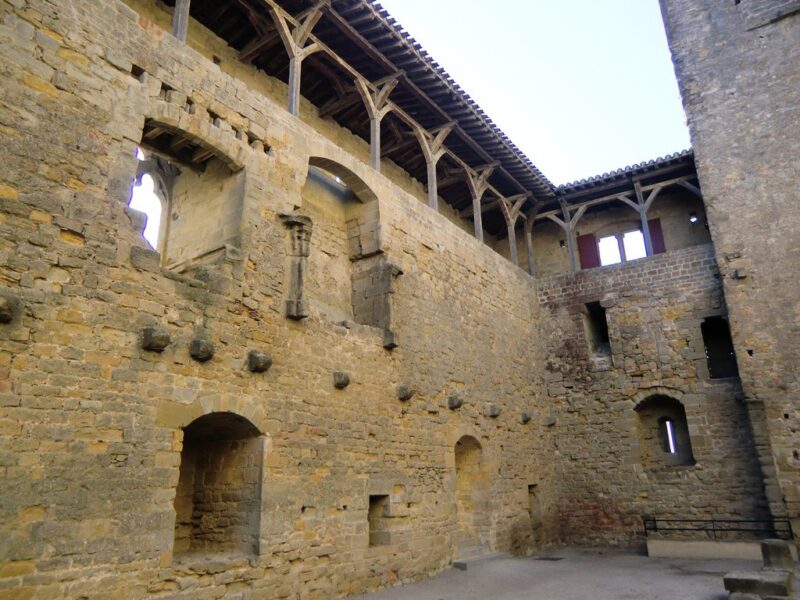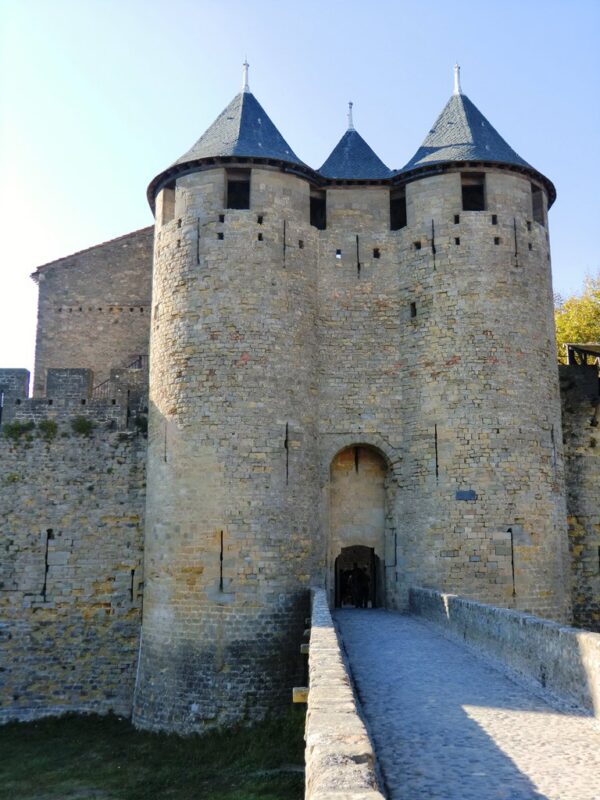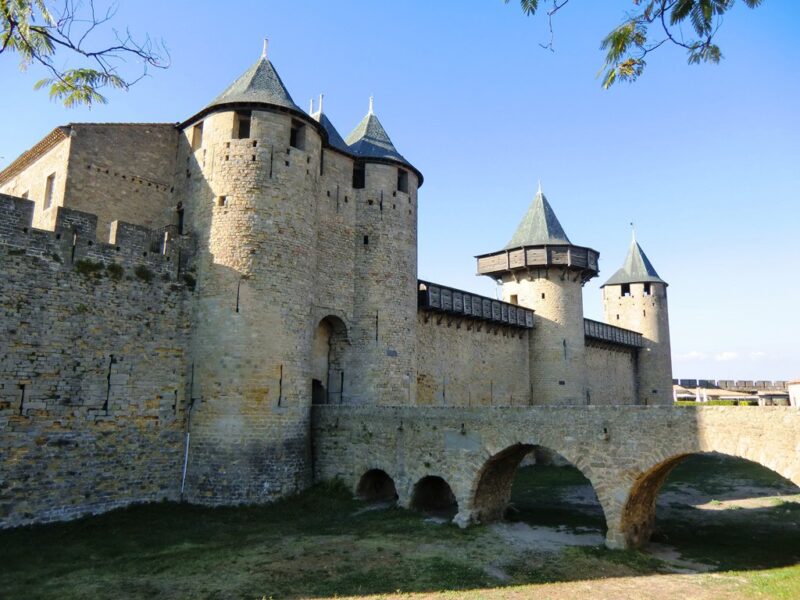You may have already heard of Carcassonne in the French South-West.
In very short, it’s a walled medieval city that became important during the Albigensian Crusade and for the rest of the Middle Ages until the French southern border moved south to the Pyrénées Mountains. While the city continued to grow outside the walls, the fortress fell into disarray after losing its purpose. That is until the 19th Century when Eugène Viollet-le-Duc renovated it to its former glory. It then became one of the most important medieval sites in France if not in the world. If you want more details, please check the Wikipedia page or the official website.
Today, I want to focus on the castle inside the walled city.
The castle was built on the grounds and foundations of much older constructions (dating back to the 1st Century) at the beginning of the 12h Century (circa 1120) by Bernard Ato IV Trencavel, Viscount of Carcassonne, Albi, Béziers, Agde, and Nîmes.
It belonged to the Trencavel family for about a Century until Simon de Montfort took it over by order of the King of France (that would be Philippe-Auguste) during the Albigensian Crusade.
One thing that may seem odd about this castle is that it is quite heavily fortified even though it is built within the walls of an already heavily fortified city. The thing was that after Simon de Montfort became Viscount of Carcassonne, not only the city still needed to be protected – as it had an important strategic location – but Simon also had to protect himself from the local population. He was not a very popular man among the locals, having committed quite a few massacres in the region during the Crusade.
You may have heard the expression:
“Kill them all, God will recognize his own!”
Well, it’s attributed to him. That gives you an idea of the mood there and then.
With that being said, it should be noted that when he took the city of Carcassonne from the Cathars, the population wasn’t massacred. The legend says that everyone was simply expelled from the city with nothing but a shirt on their back. It’s a legend, but it may not be too far from the truth.
The castle and the city remained under the king’s control after the end of the Crusade and during the following centuries. It was slowly abandoned in the 17th century when the French border was expanded to the south and the city lost its military purpose.
Today, the main building has a small museum that showcases various elements from the castle that were found when it was renovated in the second half of the 19th Century.
I like this window with sitting included inside the wall itself.
A reminder that daylight was a precious indoor commodity at the time.
You may be wondering why this window and this fireplace are located so high, right? Well…
See, this inner courtyard wasn’t a courtyard at all back when people lived in the castle. Those were rooms, with roofs and all. However, as the floors were made of wood, they’re gone now.
We sometimes tend to think that medieval castles were solely made of stone. That is far from the truth, wood was a major component too. And it didn’t last as long as the stone.
Here is what the place looked like:
The first floor/ground floor was some sort of atrium.
The floor above was composed of regular indoor rooms.
If you’re ever in the South of France, Carcassonne should be near the top of your list as far as visits are concerned. I hope I’ll get to tell you more about it in the future.
Discover more from liminal web
Subscribe to get the latest posts sent to your email.

